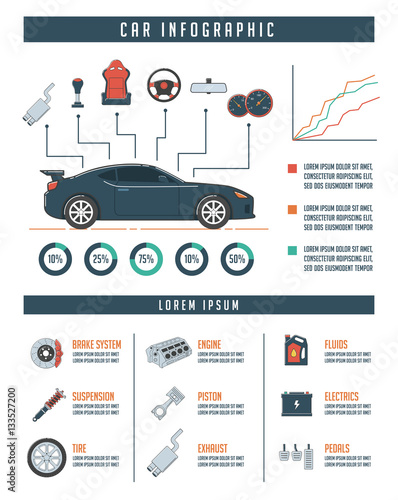Understanding The Definition Behind Your Automobile'S Caution Lights: A Thorough Look
Understanding The Definition Behind Your Automobile'S Caution Lights: A Thorough Look
Blog Article
Web Content Created By-Boye Torres
When you're behind the wheel, those glowing warning lights on your dashboard can be a bit perplexing. Do you understand what they're attempting to tell you regarding your automobile's health and wellness? Recognizing the value of these lights is crucial for your safety and the long life of your lorry. So, the following time among those lights pops up, wouldn't you want to decipher its message precisely and take the needed actions to resolve it?
Common Warning Lights and Interpretations
Identify typical warning lights in your car and comprehend their definitions to make certain safe driving.
The most common warning lights include the check engine light, which signals problems with the engine or emissions system. If this light comes on, it's crucial to have your car checked immediately.
boat polishing cautioning light shows reduced oil stress, needing instant interest to prevent engine damage.
A flashing battery light could recommend a damaged charging system, possibly leaving you stranded otherwise addressed.
The tire stress tracking system (TPMS) light notifies you to reduced tire pressure, influencing vehicle stability and gas effectiveness. Neglecting this can bring about hazardous driving problems.
The abdominal muscle light shows a problem with the anti-lock braking system, compromising your capability to stop rapidly in emergencies.
Finally, the coolant temperature level alerting light warns of engine getting too hot, which can cause serious damage if not dealt with promptly.
Recognizing these typical warning lights will help you address concerns quickly and preserve risk-free driving problems.
Relevance of Prompt Interest
Understanding the typical warning lights in your car is just the primary step; the importance of immediately resolving these warnings can not be emphasized sufficient to guarantee your safety when traveling.
When a caution light brightens on your dashboard, it's your auto's means of connecting a potential problem that needs interest. Ignoring these warnings can lead to much more serious troubles later on, endangering your safety and security and potentially costing you a lot more in repairs.
Motivate interest to advising lights can prevent failures and crashes. For instance, a blinking check engine light might indicate a misfire that, if left unattended, might trigger damage to the catalytic converter. Addressing this quickly can conserve you from a pricey repair work.
Likewise, a brake system alerting light may signify reduced brake liquid or used brake pads, important components for your safety and security when driving.
Do It Yourself Troubleshooting Tips
If you notice a warning light on your dashboard, there are a couple of DIY repairing suggestions you can try before looking for professional aid.
The initial step is to consult your auto's guidebook to recognize what the certain warning light shows. Often the problem can be as basic as a loosened gas cap causing the check engine light. Tightening up https://www.wral.com/wake-tech-opens-state-art-facility-train-students-auto-repair-careers/20233976/ might deal with the problem.
https://brakecheck73950.ttblogs.com/11721244/mobile-auto-explaining-enhancing-your-automobile-s-look-on-the-go is a low battery, which can cause various alerting lights. Examining the battery links for deterioration and ensuring they're safe might take care of the problem.
If a caution light continues, you can attempt resetting it by disconnecting the car's battery for a few mins and afterwards reconnecting it. In addition, checking your vehicle's liquid levels, such as oil, coolant, and brake liquid, can assist repair advising lights connected to these systems.
Final thought
Finally, understanding your auto's warning lights is crucial for maintaining your lorry running efficiently and securely. By quickly resolving these signals and knowing what they mean, you can avoid expensive fixings and potential malfunctions.
Remember to consult your cars and truck's handbook for particular details on each warning light and do something about it accordingly to make sure a trouble-free driving experience.
Keep informed, remain safe on the road!
